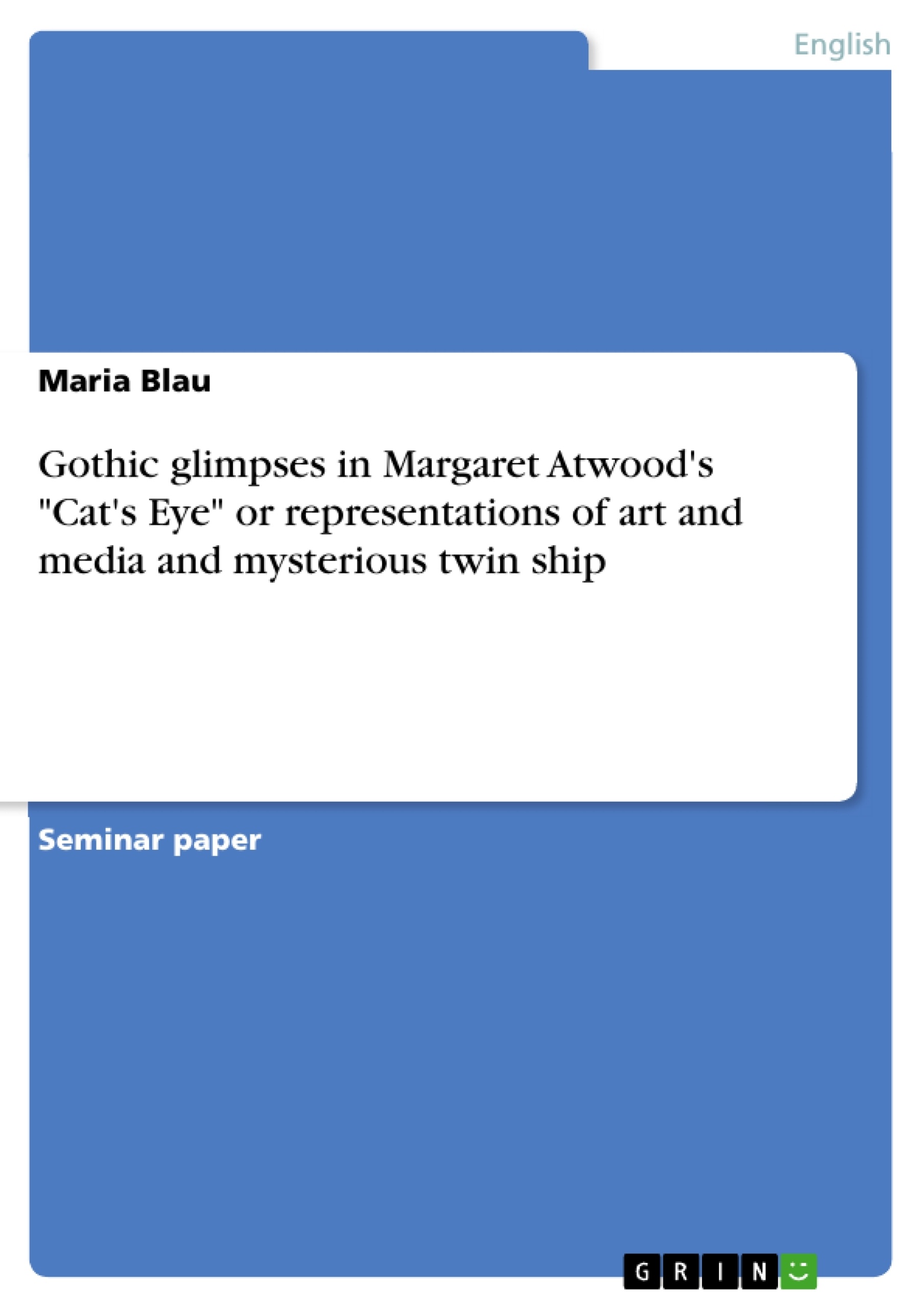Margaret Atwood’s Cat’s Eye is a novel that certainly covers plenty of discourses and touches several genres. At the head of all it can well be considered to be a bildungs- or künstlerroman in the guise of the fictive autobiography. Many critics have pointed out that it is one of Atwood most personal novels, a piece that undoubtedly turns “the tables on their own kind”1, that has many autobiographical features. But that will not be the concern in my following reflections which will rather deal with the gothic elements of the novel. My readers may argue that it is rather Atwood’s Robber Bride, The Blind Assassin and Alias Grace that are obliged to the gothic theme.2 But it is actually Cat’s Eye that offers the vast range of gothic elements that correspond to each other and to the various levels of representation the novel offers. I regard it as necessary to deliver a short definition of the gothic novel in the first place. However, I want to point out that I do not see Cat’s Eye just in the dark illumination of the gothic. I rather pick up and explain different gothic gatherings and “gothic games” Atwood plays with the reader than devote my analysis to the issue completely.
Inhaltsverzeichnis (Table of Contents)
- Introduction
- A Short Definition of the Gothic Novel
- Representation I
- Representing Elaine's Dreams
- The Dream of the Deadly Nightshade
- The Dream of the Falling Woman
- Representing Art and Media
- Representing Film
- Elaine as Artwork
- The Notion of the Past
- Representing Comic
- Mirror-situations I
- The Divided Face
- Representing Fictive Feminist Works of Art
- Store Mannequins and Dolls
- Representing Non-Fictive Art
- Mirror-situations II
- The Notion of Rivalry
- Elaine as Vampire
- Representing Elaine's Paintings
- Cat's Eye
- The Three and Shakespeare
- Unified Field Theory
- Gothic Places I: The Cemetery
- The Gothic Paradox
- The Converted Virgin Mary
- Cat's Eye
- Representing Film
Zielsetzung und Themenschwerpunkte (Objectives and Key Themes)
This paper explores the gothic elements within Margaret Atwood's novel, "Cat's Eye", and examines how these elements are manifested through various levels of representation. The analysis focuses on the novel's portrayal of art and media, particularly the interplay between dreams, paintings, film, and comics, to reveal the complex and layered nature of the gothic in Atwood's work.
- The use of gothic themes and imagery in Margaret Atwood's "Cat's Eye"
- The role of art and media as vehicles for representing gothic ideas
- The intersection of dreams, paintings, film, and comics in the novel
- The exploration of themes like sexuality, suppression, and the psychology of trauma through gothic lens
- The connections between the gothic and surrealism in the context of Atwood's writing
Zusammenfassung der Kapitel (Chapter Summaries)
The paper begins by providing a brief definition of the gothic novel and its historical development, drawing parallels to the themes and motifs present in "Cat's Eye." The first chapter delves into the representation of Elaine's dreams, highlighting two key dreams: the dream of the deadly nightshade berries and the dream of the falling woman. The analysis explores the connection between these dreams and the themes of sexuality, suppression, and the surreal.
The subsequent chapter examines the role of art and media in representing the gothic. It explores how various artistic mediums, including film, comics, and Elaine's own paintings, serve as reflections of the protagonist's experiences and relationships. The analysis highlights the significance of paintings like "Falling Woman" and "Unified Field Theory" in illuminating the gothic aspects of the novel.
Schlüsselwörter (Keywords)
Key themes and concepts explored in this paper include gothic literature, Margaret Atwood, "Cat's Eye," representation, art and media, dreams, surrealism, film, comics, paintings, sexuality, suppression, psychology of trauma, feminism, and literary analysis.
- Representing Elaine's Dreams
- Citar trabajo
- Maria Blau (Autor), 2005, Gothic glimpses in Margaret Atwood's "Cat's Eye" or representations of art and media and mysterious twin ship, Múnich, GRIN Verlag, https://www.grin.com/document/57770



